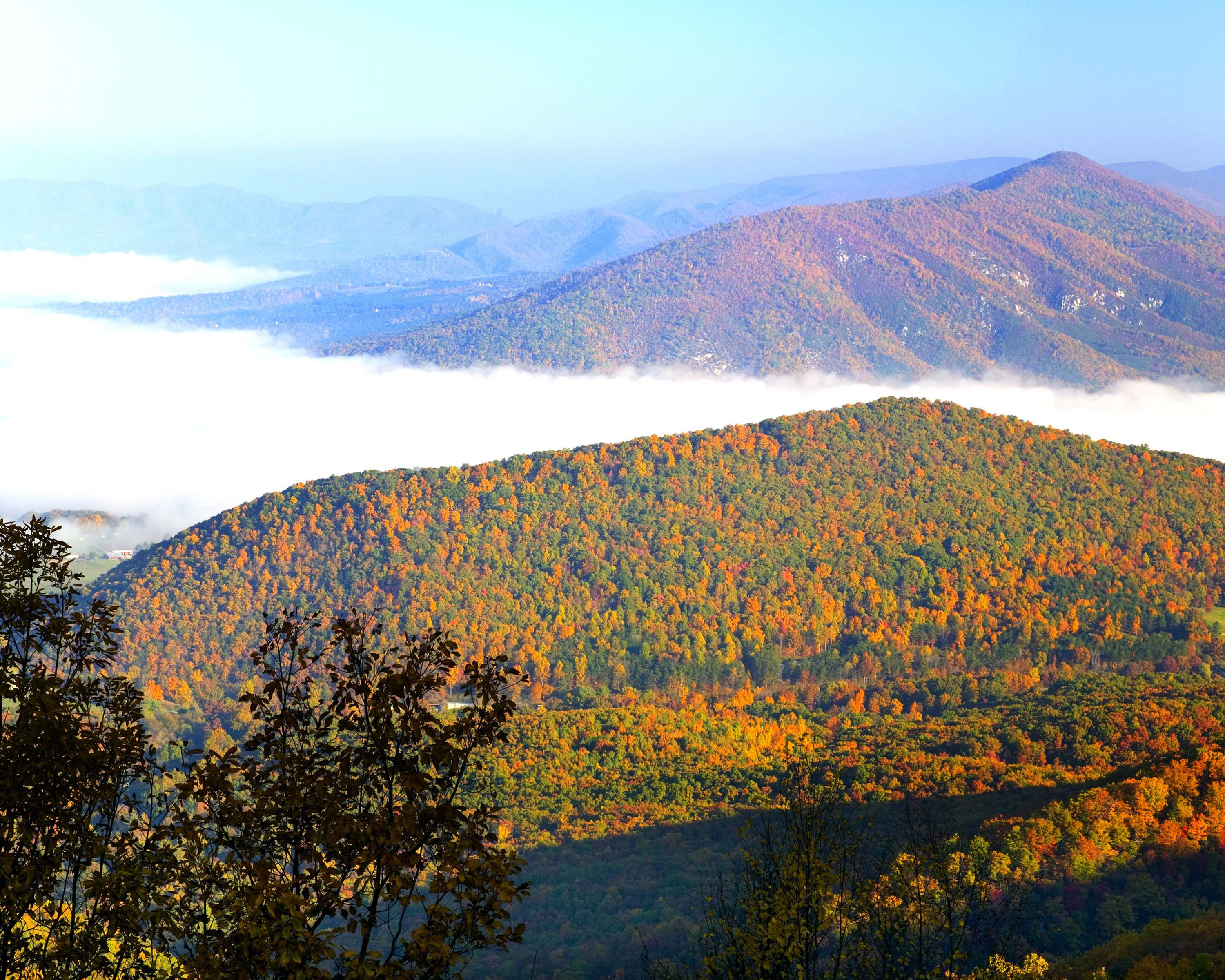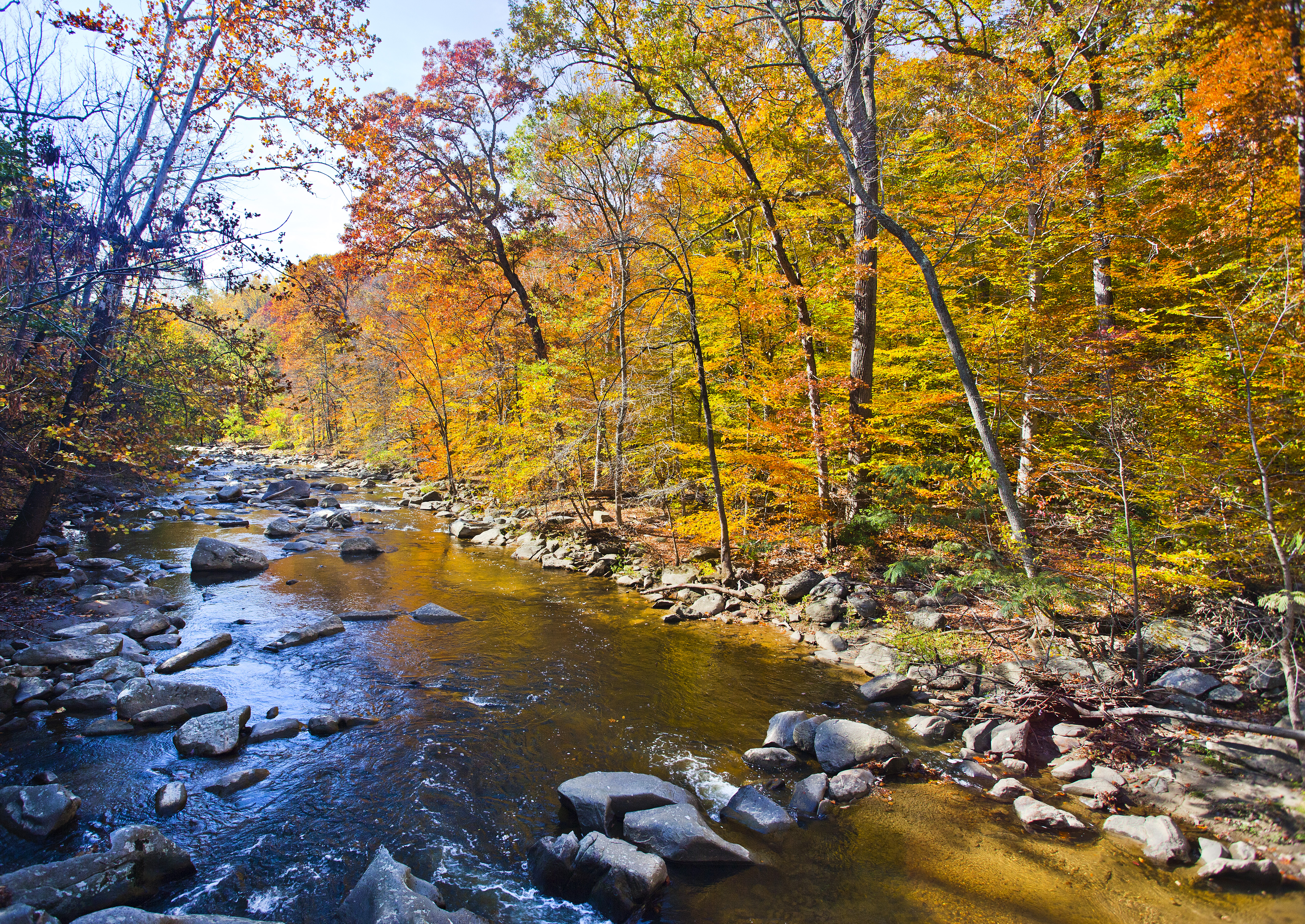Leaf lovers, rejoice: Fall will be colorful.
Last year’s weather fluctuated from unseasonably warm to cold and made for a late and lackluster leaf-peeping season. This year, the South is on track to have a much more vibrant display of colors, says Howard S. Neufeld, professor of biology at Appalachian State University. Temperatures in September are expected to be slightly above average, but not as warm as in 2018. As long as the South doesn’t get any unusual rain, the warmer temperatures should only delay the peak color by a few days and not reduce the splendor of the season. “I think we’re moving back to what old-timers might consider a more normal fall color season,” says Neufeld, who is known on Facebook as the “Fall Color Guy.”
The Appalachian mountains are one of the South’s most popular regions to take in fall foliage. Expect peak color between October 18 and October 25 for areas between 3,000 and 4,000 feet of elevation, which is much of the Blue Ridge Parkway, Neufeld says. Areas at higher elevations, such as Grayson Highlands State Park in Virginia, could start to turn as early as the first week of October. If you miss the peak time at higher elevations, stop at overlooks and peer down into a sea of colorful trees.

Photo: Courtesy of Visit Virginia's Blue Ridge
A display of oranges, reds, and yellows on Purgatory Mountain in Virginia.
After the dramatic temperature swings of 2018, many trees didn’t change color at the same time, and leaves looked splotchy and scattered. If the weather stays more consistent this year, as is predicted, the trees should be more synchronized, leading to dazzling landscapes swathed in deep reds, bright yellows, and lush purples. Keep an eye out for sourwood trees, with dark red leaves that drape like lace, and magnolia tree leaves, which turn from bright yellow to chocolate brown before dropping. Even residents in the swampy coastal South can catch a glimpse of the show with cypress trees, which turn rust red, and sweet gum trees, which show off yellow and purple hues.
To capture the grandeur in photos, Steven McBride, an outdoor photographer based in Asheville, North Carolina, recommends settling into your vantage point before sunrise. This allows you to take advantage of the warm glow of dawn’s light without having to fight the crowds at sunset. Even cloudy days can offer good opportunities to shoot stellar photos, McBride says, especially in wooded areas, because the contrasting colors of the trees will stand out. He recommends searching the forest for creeks or waterfalls with lush vegetation to snap a memorable photo.

Photo: Courtesy of the National Park Service
Trees change color in Rock Creek Park in Washington, D.C.
Neufeld emphasizes that it’s impossible to predict the weather, especially weeks in advance, so stay updated with online resources including the Smoky Mountain Fall Foliage map or webcams of the mountains to plan any leaf-peeping trips. “One of the things fall color does is bring people out into nature,” he says. “I think that helps everyone by increasing their appreciation of what the natural environment does for them.”
Read more: Five Fun Ways to See Fall Foliage








